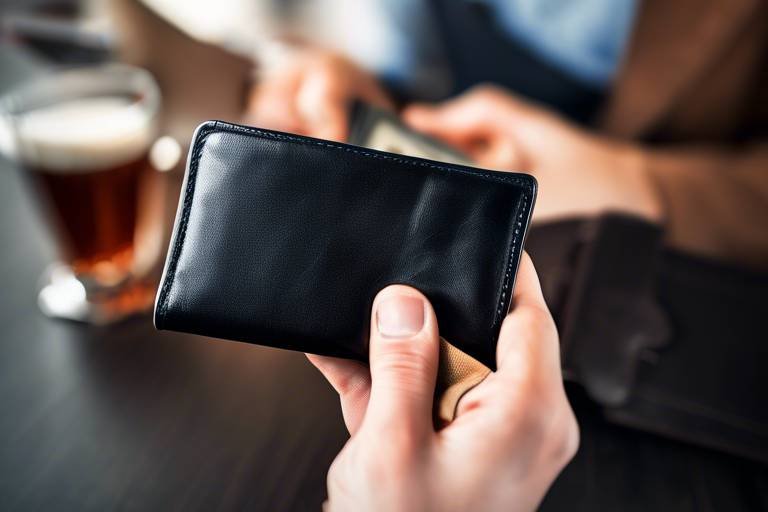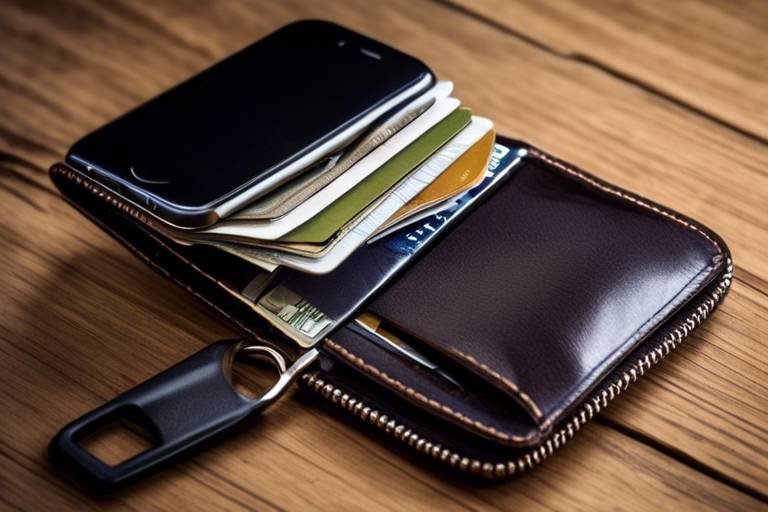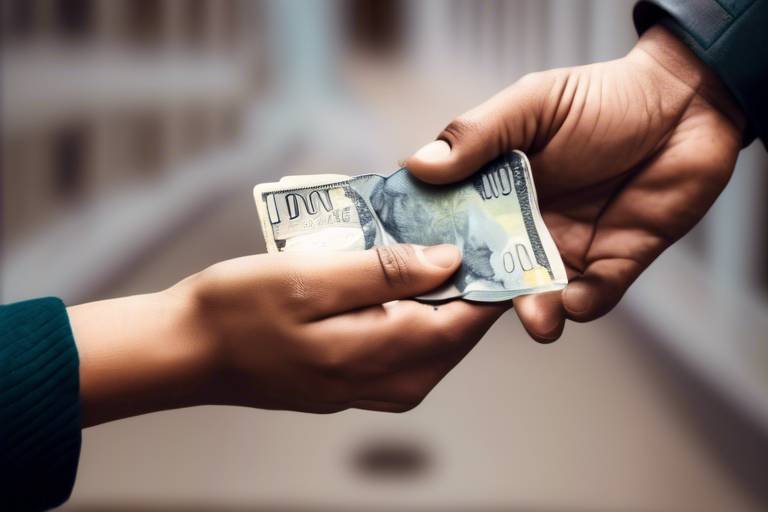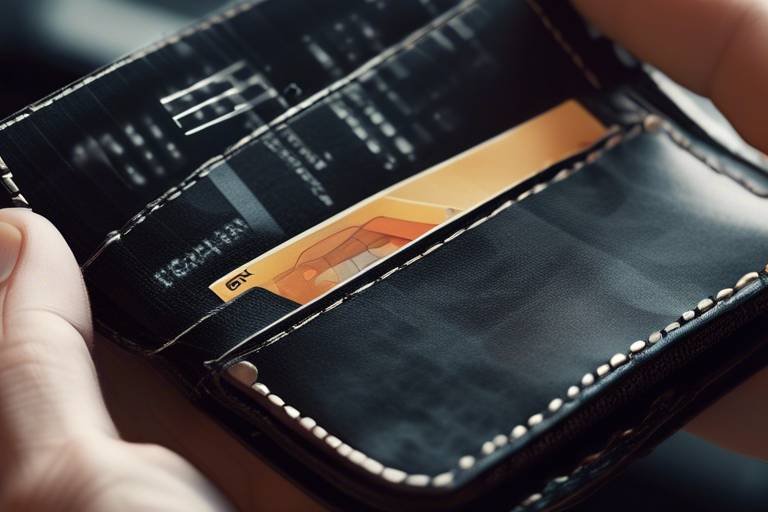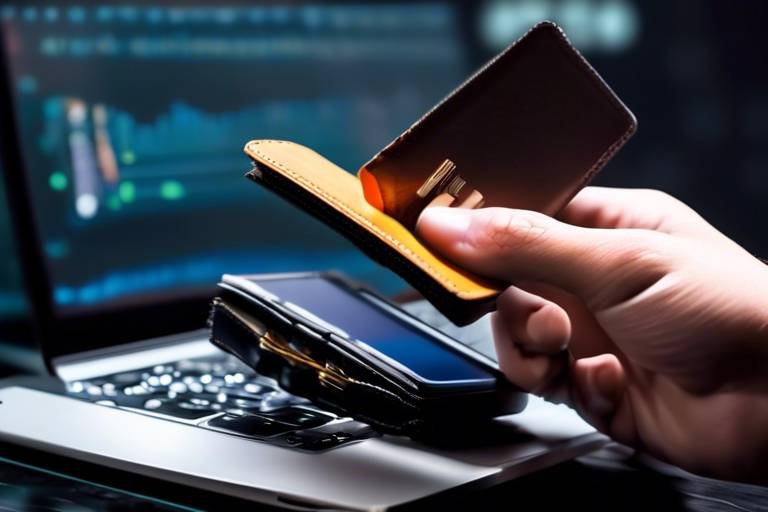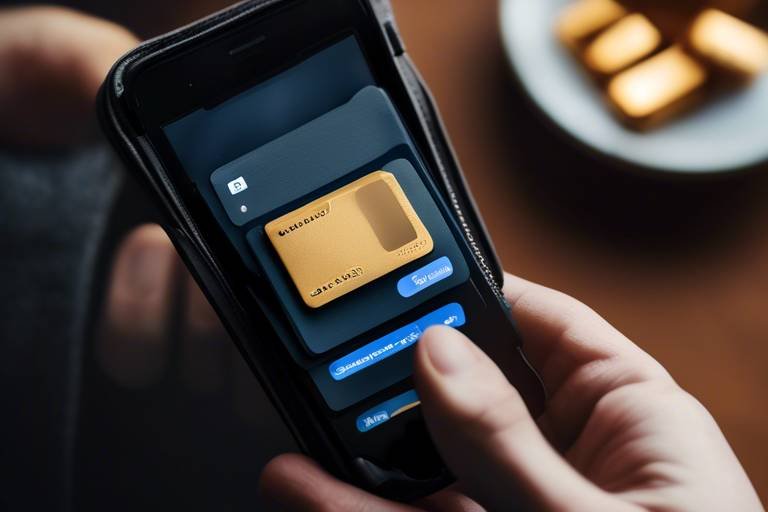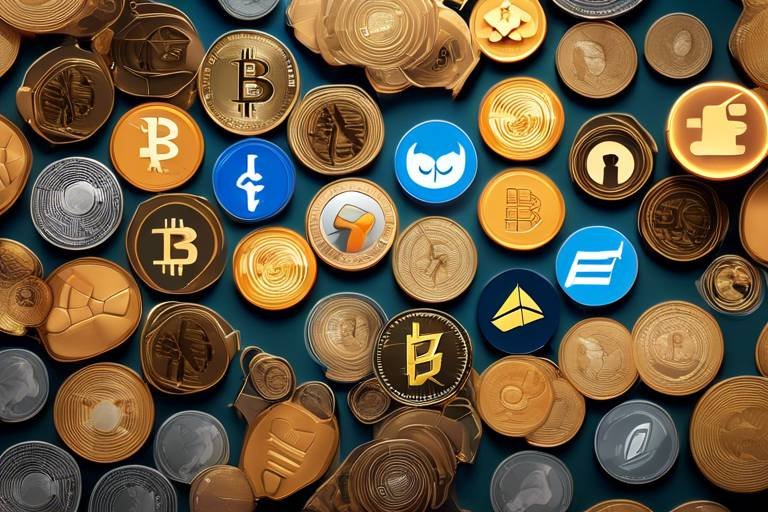The Importance of Wallet User Education and Training
In today's digital age, the rise of cryptocurrencies has revolutionized the financial landscape, making it essential for users to understand how to manage their digital assets effectively. This article delves into the significance of educating users about digital wallets, which are crucial for storing, sending, and receiving cryptocurrencies. As more people enter the crypto space, the need for comprehensive wallet user education becomes increasingly vital. Understanding the nuances of digital wallets not only empowers users but also strengthens the overall cryptocurrency ecosystem.
Digital wallets are more than just a storage solution; they are the gateway to the world of cryptocurrencies. Imagine having a virtual purse that holds all your digital currencies, allowing you to conduct transactions at the click of a button. However, with great power comes great responsibility. Users must be well-informed about the best practices for managing their wallets to avoid potential pitfalls. This is where user education and training come into play.
When users are educated about the functionalities of digital wallets, they can make better decisions regarding their investments. This knowledge encompasses understanding the various types of wallets available, such as hardware wallets, software wallets, and paper wallets, each serving a unique purpose in the crypto ecosystem. For instance, hardware wallets are known for their enhanced security features, while software wallets offer convenience for everyday transactions. By grasping these differences, users can select the wallet that best suits their needs, ultimately enhancing their experience in the cryptocurrency market.
Moreover, informed users contribute to a healthier cryptocurrency ecosystem. When individuals are aware of security measures, they are less likely to fall victim to scams or hacks, which can have ripple effects throughout the market. By prioritizing wallet user education, we can cultivate a community of savvy investors who are equipped to navigate the complexities of cryptocurrency safely and effectively. This collective knowledge not only protects individual assets but also fosters trust and stability in the broader market.
In summary, the importance of wallet user education and training cannot be overstated. As the cryptocurrency landscape continues to evolve, empowering users with the right knowledge and tools will be key to ensuring their success and security. By focusing on best practices and security measures, we can create a more informed user base that contributes positively to the future of digital currencies.
- What is a digital wallet? A digital wallet is a software application that allows users to store, send, and receive cryptocurrencies securely.
- Why is wallet education important? Wallet education helps users understand how to manage their digital assets safely, preventing losses from scams or hacks.
- What are the different types of digital wallets? The main types include hardware wallets, software wallets, and paper wallets, each serving different purposes.
- How can I secure my digital wallet? Implementing security best practices, such as two-factor authentication and recognizing phishing attempts, is crucial for wallet security.

Understanding Digital Wallets
Digital wallets are becoming an essential part of our financial lives, especially as the world shifts more towards cryptocurrency. Imagine having a wallet that fits right in your pocket, but instead of cash and coins, it holds your digital currencies like Bitcoin, Ethereum, and others. That’s the beauty of digital wallets! They allow you to store, send, and receive cryptocurrencies with just a few taps on your smartphone or clicks on your computer. But how do they work, and what types are available? Let’s break it down.
At its core, a digital wallet is a software application that interacts with various blockchain networks to enable transactions. Think of it as a bridge between you and the cryptocurrency world. When you want to make a transaction, your wallet generates a unique cryptographic key that ensures your transaction is secure and verifiable. There are primarily two types of digital wallets: hot wallets and cold wallets.
| Type of Wallet | Description | Security Level | Best Use Case |
|---|---|---|---|
| Hot Wallet | Connected to the internet, allowing for quick access and transactions. | Lower | Frequent transactions, trading |
| Cold Wallet | Offline storage, providing enhanced security against hacks. | Higher | Long-term storage, holding significant amounts |
Hot wallets are convenient for those who trade frequently or need quick access to their funds. However, their connection to the internet makes them more vulnerable to cyber threats. On the other hand, cold wallets, like hardware wallets or paper wallets, offer a higher level of security by keeping your private keys offline. They are perfect for storing larger amounts of cryptocurrency that you don’t plan to use frequently.
Understanding the role of digital wallets in financial transactions is crucial. They not only facilitate the buying and selling of cryptocurrencies but also allow users to participate in various decentralized applications (dApps) and platforms. For instance, if you want to invest in decentralized finance (DeFi) projects, you’ll need a digital wallet that supports these functionalities. The choice of wallet can significantly affect your overall experience in the cryptocurrency ecosystem.
In summary, digital wallets are not just tools; they are gateways to the future of finance. By understanding how they work and the types available, you can make informed decisions that align with your financial goals. So, are you ready to dive into the world of digital wallets and cryptocurrencies? The adventure awaits!

Security Best Practices
When it comes to securing your digital wallet, knowledge is your best defense. Just like locking your front door at night, implementing security best practices is essential for protecting your hard-earned cryptocurrencies. Digital wallets can be an inviting target for cybercriminals, and without the right precautions, you could find yourself at risk of losing your assets. So, what can you do to safeguard your wallet? Let’s dive into some crucial strategies that every wallet user should adopt.
First and foremost, it’s vital to understand the nature of the threats that exist. Cybercriminals often employ sophisticated techniques to exploit vulnerabilities in digital wallets. This is where education becomes paramount. By staying informed about the types of attacks that can occur, such as phishing, malware, and social engineering, you can better prepare yourself to avoid falling victim to these scams.
One of the most effective ways to enhance your wallet's security is by utilizing strong passwords. A strong password is like a fortress; it should be complex, unique, and hard to guess. Avoid using easily obtainable information like birthdays or names. Instead, consider using a mix of uppercase and lowercase letters, numbers, and special characters. For example, instead of “password123,” try something like “P@55w0rd!2023.” Remember, the longer and more complicated your password, the harder it is for someone to crack it.
Another essential practice is to enable two-factor authentication (2FA). This adds an extra layer of security by requiring not just your password but also a second form of verification, such as a code sent to your mobile device. Imagine having a double lock on your door; even if someone has your key, they still can’t get in without that second lock. Implementing 2FA significantly reduces the risk of unauthorized access to your wallet.
So, how does 2FA work? When you enable it, you'll need to provide your password and a verification code generated by an app or sent via SMS. This means that even if a hacker manages to steal your password, they won’t be able to access your wallet without that second piece of information. It's like having a security guard checking IDs at a club; they won’t let anyone in without proper verification.
When it comes to selecting a 2FA method, you have several options. Here’s a quick comparison:
| Method | Security Level | Convenience |
|---|---|---|
| Authentication Apps (e.g., Google Authenticator) | High | Moderate |
| SMS Verification | Moderate | High |
| Hardware Tokens | Very High | Low |
While SMS verification is convenient, it’s worth noting that it can be vulnerable to SIM swapping attacks. Therefore, if you’re serious about security, consider using an authentication app or a hardware token for the best protection.
Even though 2FA is a powerful tool, it’s not foolproof. Users often make common mistakes that can undermine its effectiveness. For instance, some people neglect to back up their authentication app codes, which can lock them out of their wallets if they lose their phone. Others may fall victim to phishing attempts that trick them into revealing their 2FA codes. Always be cautious and double-check the authenticity of any communication requesting your 2FA information.
In addition to these practices, regularly updating your wallet software is crucial. Software updates often contain security patches that protect against newly discovered vulnerabilities. Think of it like getting your home’s security system serviced; regular maintenance ensures that everything is functioning as it should.
In summary, the best way to protect your digital wallet is through a combination of strong passwords, two-factor authentication, and staying informed about potential threats. Remember, security is not a one-time effort but an ongoing process. By implementing these practices, you not only safeguard your assets but also contribute to a more secure cryptocurrency ecosystem.
- What is a digital wallet? A digital wallet is a software application that allows you to store and manage your cryptocurrencies.
- How can I protect my digital wallet? Use strong passwords, enable two-factor authentication, and stay informed about security threats.
- What should I do if I suspect my wallet has been compromised? Immediately change your password, enable 2FA, and contact your wallet provider for assistance.
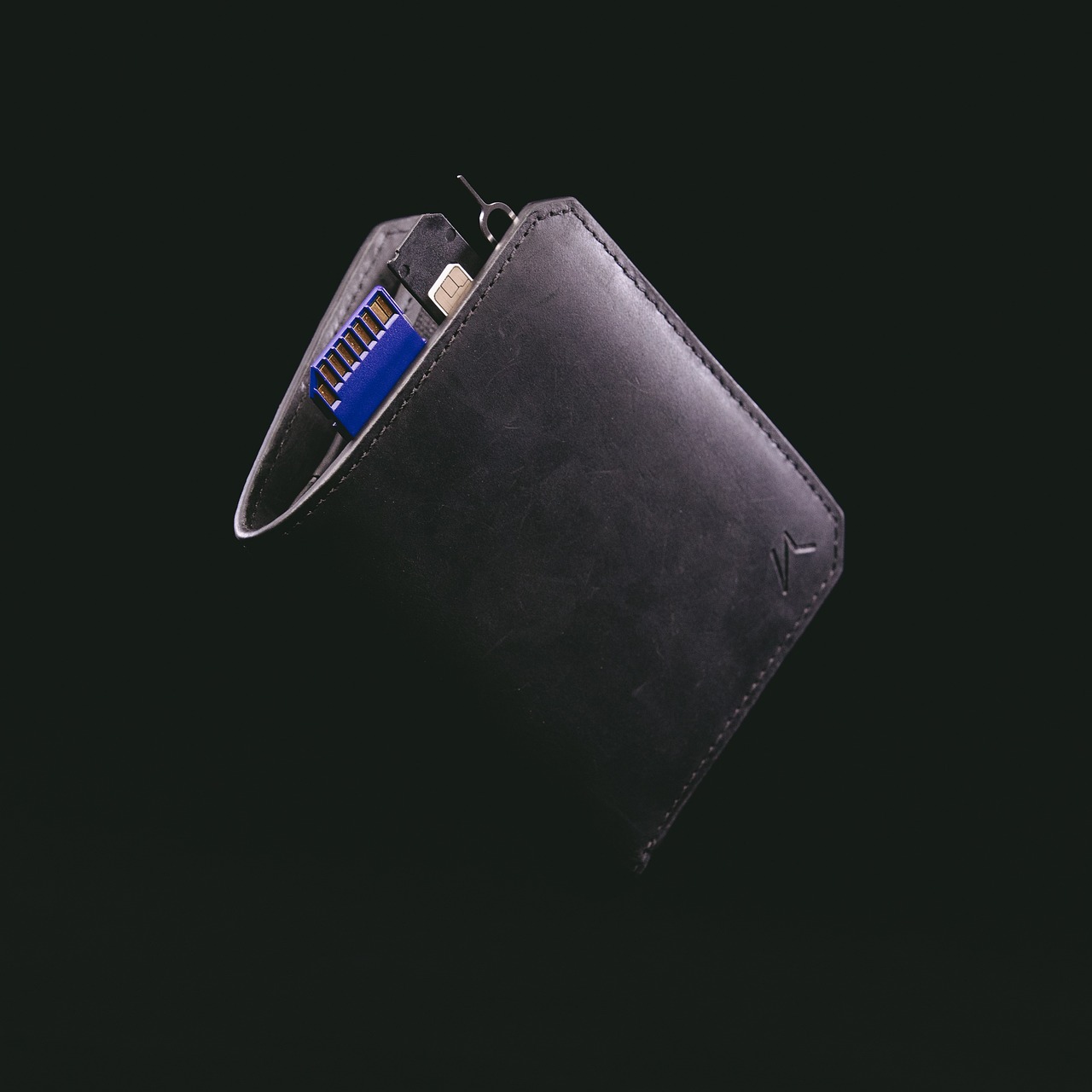
Two-Factor Authentication
In today's digital age, securing your assets is more important than ever, especially when it comes to managing cryptocurrencies. One of the most effective ways to bolster your wallet's security is through Two-Factor Authentication (2FA). But what exactly is 2FA, and why should you care? Simply put, 2FA adds an additional layer of security beyond just your password. It requires not only something you know (your password) but also something you have (like your smartphone). This dual requirement makes it significantly harder for unauthorized users to access your wallet.
Imagine you have a treasure chest (your digital wallet) that only opens with a key (your password). Now, if someone were to steal that key, they could easily access your treasure. However, by implementing 2FA, you effectively add a second lock that requires a unique code sent to your phone each time someone tries to access your chest. This means even if someone has your key, they still can't get in without that code. Pretty clever, right?
So, how does 2FA work? Typically, after entering your password, you'll receive a code via an authentication app or SMS that you must enter to gain access. This process not only helps to verify your identity but also alerts you to any unauthorized attempts to access your account. However, it's essential to choose the right method for 2FA to ensure maximum security.
When it comes to 2FA, there are several methods available, each with its pros and cons. Here’s a quick overview:
| 2FA Method | Security Level | Ease of Use |
|---|---|---|
| Authentication Apps (e.g., Google Authenticator) | High | Moderate |
| SMS Verification | Medium | Easy |
| Email Verification | Low | Easy |
While SMS verification may seem convenient, it can be vulnerable to interception. On the other hand, authentication apps provide a more secure option, as they generate codes that are valid only for a short period and are not transmitted over the internet. So, when choosing a method, weigh the security level against how easy it is for you to use.
Even with the best intentions, users can fall into traps that undermine the effectiveness of 2FA. Here are a few common pitfalls to be aware of:
- Using SMS for 2FA: As mentioned earlier, SMS can be intercepted. If possible, opt for an authentication app.
- Neglecting Backup Codes: Many services provide backup codes for 2FA. Store these securely in case you lose access to your primary 2FA method.
- Sharing Codes: Never share your 2FA codes with anyone, even if they claim to be from the service provider.
By understanding and implementing 2FA correctly, you can significantly enhance the security of your digital wallet. Remember, in the world of cryptocurrency, knowledge is power, and taking these extra steps can make all the difference in protecting your valuable assets.

Choosing the Right 2FA Method
When it comes to securing your digital wallet, choosing the right two-factor authentication (2FA) method is crucial. Think of 2FA as a double lock on your front door; it makes it significantly harder for intruders to gain access. However, not all locks are created equal. Different methods of 2FA provide varying levels of security and convenience, so it's essential to evaluate your options carefully.
There are several popular 2FA methods available today, each with its own pros and cons. Let's break down some of the most common methods:
- Authentication Apps: Apps like Google Authenticator and Authy generate time-sensitive codes that are unique to your device. They are generally considered one of the most secure options because they don't rely on your phone number, which can be hijacked.
- SMS Verification: This method sends a code via text message to your phone. While it's better than nothing, it’s not the most secure option since phone numbers can be spoofed or redirected.
- Hardware Tokens: Devices like YubiKey provide a physical form of authentication. You simply plug them into your device or tap them on your phone. They offer robust security but can be lost or damaged.
- Email Verification: Some services send codes to your email, but this method is also vulnerable to hacking, making it less reliable.
While each of these methods has its strengths, it's essential to consider your lifestyle and how you use your digital wallet. For instance, if you travel frequently, a hardware token might be a hassle to carry around. On the other hand, if you prefer convenience, SMS verification might seem appealing, but remember the risks involved.
Another critical aspect to consider is the recovery process. What happens if you lose access to your 2FA method? For example, if you use an authentication app and lose your phone, you may find yourself locked out of your wallet. Always ensure that you have backup recovery codes or alternative methods in place to regain access.
In conclusion, choosing the right 2FA method involves weighing the trade-offs between security and convenience. The goal is to find a solution that not only protects your digital assets but also fits seamlessly into your daily routine. Ultimately, the best choice is the one that makes you feel secure while allowing you to manage your wallet with ease.

Common 2FA Pitfalls
While implementing two-factor authentication (2FA) is a significant step toward securing your digital wallet, many users often stumble upon common pitfalls that can undermine its effectiveness. It's crucial to understand these pitfalls to make informed decisions and enhance your wallet's security. One major issue arises from the reliance on SMS verification codes. Although convenient, SMS messages can be intercepted, making them a less secure option compared to other methods. Imagine someone eavesdropping on your phone call, waiting for the right moment to snatch away your verification code—scary, right?
Another common mistake is using the same 2FA method across multiple accounts. This practice can be likened to using the same key for your home, car, and safety deposit box. If one key is compromised, all your valuables are at risk. Therefore, diversifying your 2FA methods can significantly enhance your security. For instance, consider using an authentication app like Google Authenticator or Authy, which generates time-based codes that are much harder to intercept.
Additionally, many users neglect to back up their 2FA recovery codes. These codes are your lifeline if you lose access to your primary 2FA method. Not having them stored safely is akin to throwing away the spare key to your house; if you lose your main key, you're locked out with no way in. Always ensure you have these codes saved in a secure location, preferably offline, to avoid potential lockouts.
Moreover, users often overlook the importance of timely updates for their authentication apps. Just like you wouldn’t ignore an update for your phone’s operating system, neglecting updates for your 2FA app can expose you to security vulnerabilities. Always check for updates regularly to ensure you’re protected against newly discovered threats.
Finally, many people fall victim to social engineering tactics where attackers impersonate trusted contacts to gain access to your 2FA codes. This is where awareness and vigilance come into play. Always verify requests for your 2FA codes through a secondary communication method. For example, if you receive a message from a friend asking for your code, give them a call to confirm it’s really them. Remember, if something feels off, it probably is!
In summary, while 2FA is a powerful tool for enhancing your wallet's security, being aware of these common pitfalls can help you avoid potential traps. By diversifying your methods, backing up recovery codes, staying updated, and maintaining vigilance against social engineering attacks, you can significantly bolster your digital wallet's defenses.
- What is two-factor authentication (2FA)?
2FA is a security process that requires two different forms of identification before granting access to an account. This typically involves something you know (like a password) and something you have (like a smartphone app or SMS code).
- Why is 2FA important for digital wallets?
2FA adds an extra layer of security, making it much harder for unauthorized users to gain access to your wallet, even if they have your password.
- What should I do if I lose my 2FA device?
Use your backup recovery codes to regain access. If you don't have them, you may need to contact the wallet provider for assistance.
- Can I use multiple 2FA methods?
Yes! Using different 2FA methods for different accounts can enhance your security.
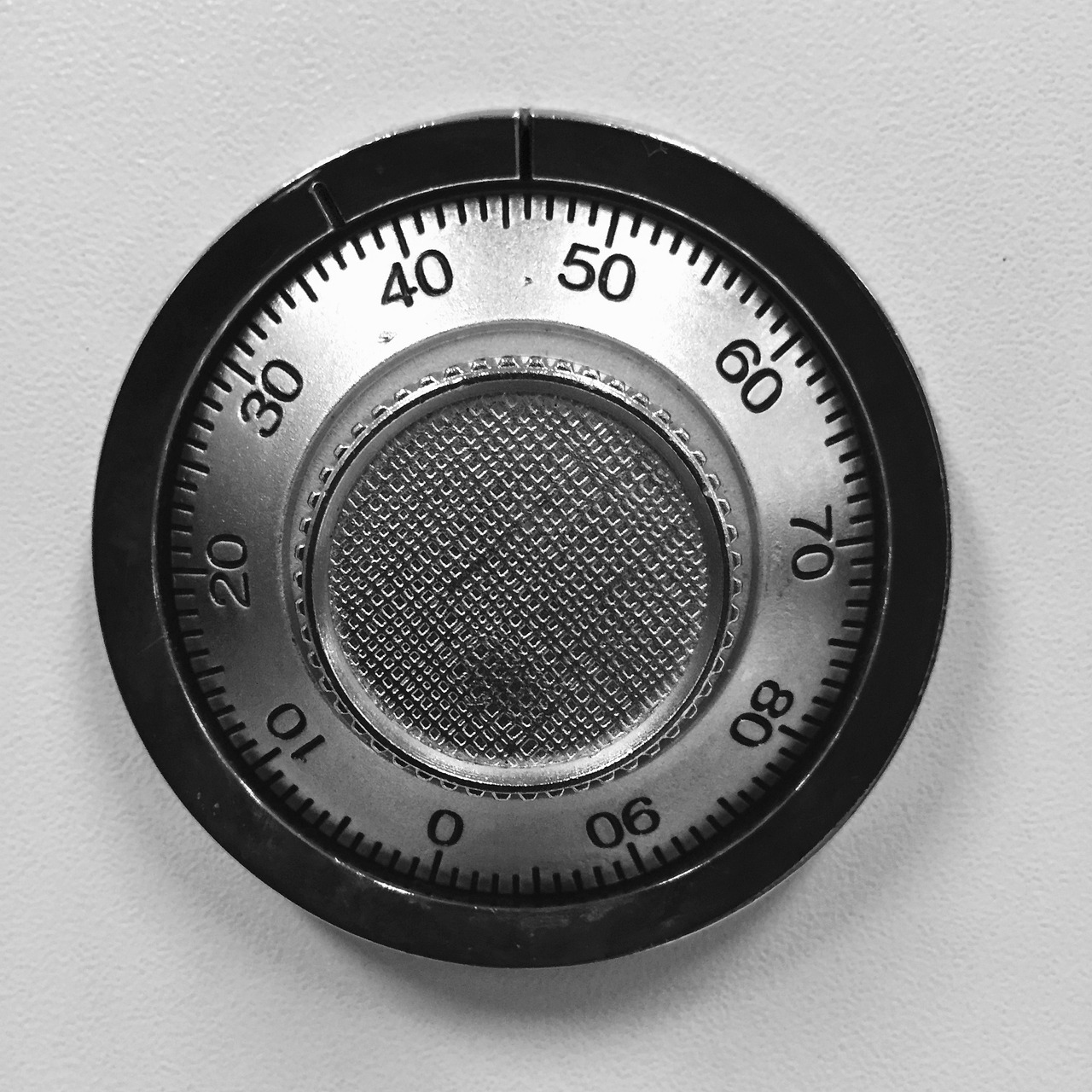
Recognizing Phishing Attempts
In the ever-evolving world of digital wallets, one of the most insidious threats users face is phishing attacks. These attacks are designed to trick you into revealing sensitive information, such as your wallet credentials or private keys. Imagine you're walking through a crowded market, and someone hands you a flyer that looks legitimate but is actually a trap. That's what phishing is like in the digital realm. To protect yourself, it's crucial to learn how to recognize the signs of phishing attempts.
Phishing attempts can come in various forms, including emails, text messages, or even social media messages. They often mimic legitimate sources, such as your wallet provider or an exchange, making it difficult to distinguish between a genuine communication and a scam. Here are some common characteristics to watch out for:
- Unusual Sender Addresses: Always check the sender's email address. Scammers often use addresses that look similar to legitimate ones but contain subtle misspellings.
- Urgent Language: Phishing messages often create a sense of urgency, urging you to act quickly. Phrases like "Your account will be suspended!" or "Immediate action required!" are red flags.
- Generic Greetings: Legitimate companies usually address you by your name. Be wary of messages that start with "Dear User" or "Dear Customer."
- Suspicious Links: Hover over links before clicking on them. If the URL looks odd or doesn't match the official website, don’t click it!
- Requests for Sensitive Information: No legitimate company will ask for your password or private key via email or text. If you receive such a request, it's a scam.
Recognizing these signs can make a significant difference in your ability to protect your digital assets. But what should you do if you suspect a phishing attempt? Always double-check by visiting the official website directly instead of clicking on links. If you received an email, go to your wallet provider's site and log in from there. Additionally, report the phishing attempt to the appropriate authorities or the service being impersonated.
Staying vigilant is key. Just as you wouldn't give your wallet to a stranger on the street, you shouldn't let your guard down in the digital world. Being informed and cautious can save you from falling victim to these malicious attacks.
Q: What should I do if I accidentally clicked on a phishing link?
A: If you clicked on a suspicious link, immediately disconnect from the internet and run a security scan on your device. Change any passwords associated with your accounts and enable two-factor authentication if you haven't already.
Q: How can I report phishing attempts?
A: Most email providers have a feature to report phishing. You can also report phishing emails to the Federal Trade Commission (FTC) or the Anti-Phishing Working Group.
Q: Is it safe to use public Wi-Fi for accessing my digital wallet?
A: Public Wi-Fi can be risky. Avoid accessing sensitive accounts over public networks unless you're using a reliable VPN to encrypt your connection.
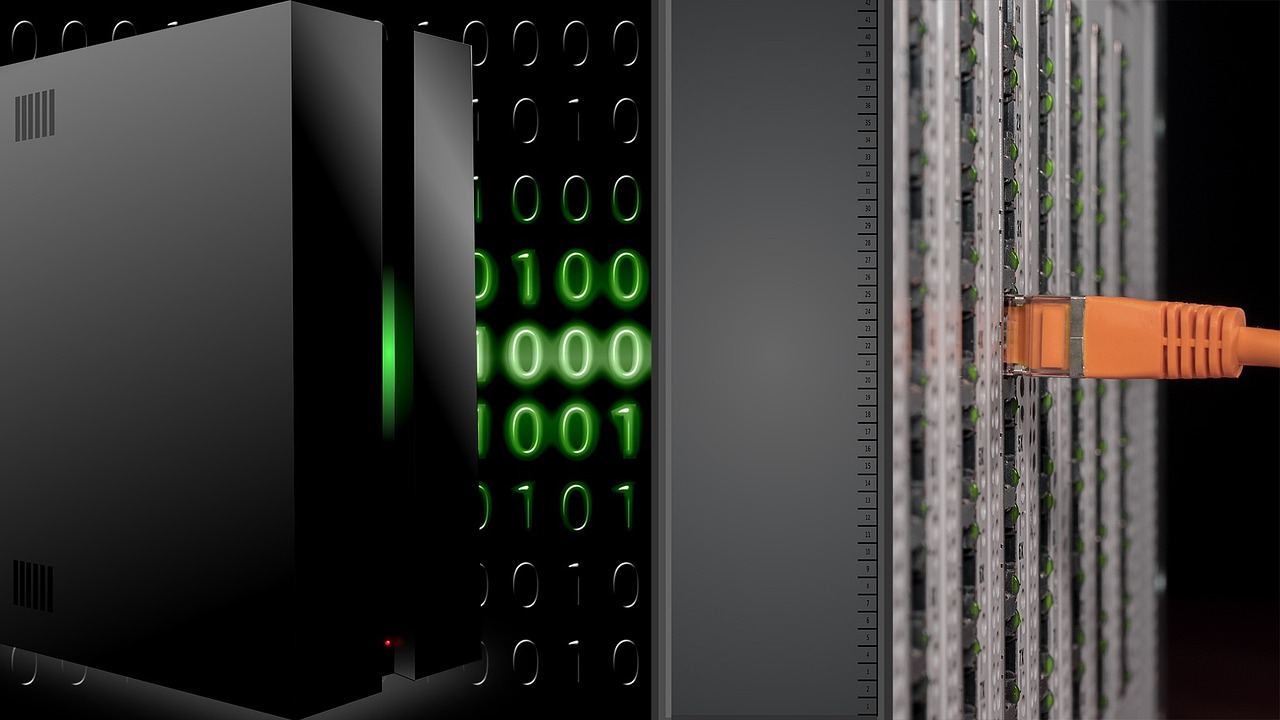
Importance of Regular Updates
In the fast-paced world of cryptocurrency, keeping your digital wallet software updated is not just a good practice; it's a vital necessity. Just like you wouldn't drive a car with outdated navigation software, using an outdated wallet can expose you to unnecessary risks. Regular updates ensure that your wallet is equipped with the latest security features, bug fixes, and enhancements that protect your digital assets from emerging threats. Think of it as putting on armor before heading into battle; you want to be as prepared as possible!
Many users overlook the significance of updates, often thinking, "Oh, it’s just a minor change." However, these "minor changes" can include critical patches that address vulnerabilities that hackers are keen to exploit. For instance, a recent study indicated that over 60% of wallet breaches occurred due to outdated software. This statistic should send chills down your spine and motivate you to prioritize updates. Ignoring them is like leaving your front door wide open while you go on vacation—you're just inviting trouble.
Furthermore, updates often come with new features that can enhance your user experience. These improvements might include faster transaction speeds, better user interfaces, and even new functionalities that can make managing your cryptocurrencies easier. By regularly updating your wallet, you're not just protecting yourself; you're also ensuring that you have the best tools at your disposal to navigate the ever-evolving crypto landscape.
To illustrate the importance of updates further, let’s take a look at a comparison table showing the potential risks of using outdated software versus keeping it updated:
| Aspect | Outdated Wallet Software | Updated Wallet Software |
|---|---|---|
| Security | High risk of breaches | Enhanced security features |
| User Experience | Laggy and outdated interface | Smooth and modern interface |
| Functionality | Limited features | Access to new functionalities |
| Support | No support for old versions | Access to customer support |
In conclusion, staying on top of wallet updates is not just about security—it's about optimizing your entire cryptocurrency experience. So, the next time you receive a notification about an update, don’t hit the snooze button! Embrace it, and take a proactive step towards safeguarding your digital assets.
- How often should I update my wallet software? It's recommended to check for updates at least once a month or whenever you receive a notification from your wallet provider.
- What should I do if I encounter issues after an update? If you experience problems, consult the wallet's support documentation or contact customer support for assistance.
- Are updates always safe? While most updates are safe, it's important to download them from official sources to avoid malware.

How to Update Wallet Software
Updating your digital wallet software is not just a good practice; it's an essential step in safeguarding your assets. Imagine your wallet as a fortress. Just like a fortress needs regular maintenance to withstand attacks, your digital wallet requires updates to fend off emerging threats. So, how do you go about updating your wallet software? Let's break it down into a few simple steps.
First, start by checking the official website of your wallet provider. Most reputable wallet services will have a dedicated section for updates where you can find the latest version of the software. It’s crucial to download updates only from official sources to avoid malicious software that could compromise your wallet. When you find the update, look for release notes. These notes often detail what changes have been made, including security enhancements and bug fixes, giving you insight into why the update is necessary.
Once you've downloaded the update, the installation process is usually straightforward. Most wallet software will guide you through the installation steps. However, before proceeding, ensure that you have backed up your wallet. This backup acts as a safety net, allowing you to restore your wallet in case anything goes wrong during the update. It's like having a spare key to your fortress—better safe than sorry!
After the installation is complete, it's a good idea to run a quick check to ensure everything is functioning correctly. Open your wallet and verify that your balance and transaction history are accurate. If you encounter any issues, consult the support section of your wallet provider’s website. They often have FAQs or tutorials that can help troubleshoot common problems.
Lastly, remember that updating your wallet software isn’t a one-time task. Regular updates are vital as they not only improve security but also enhance functionality. Set a reminder to check for updates at least once a month. This proactive approach will keep your digital fortress fortified against potential threats.
To summarize, here’s a quick checklist for updating your wallet software:
- Check the official website for updates.
- Read the release notes for important changes.
- Back up your wallet before installing the update.
- Follow the installation instructions carefully.
- Verify your wallet’s functionality post-update.
- Schedule regular checks for future updates.
By following these steps, you can ensure that your digital wallet remains secure and functional. Staying informed and proactive is key in the ever-evolving landscape of cryptocurrency.
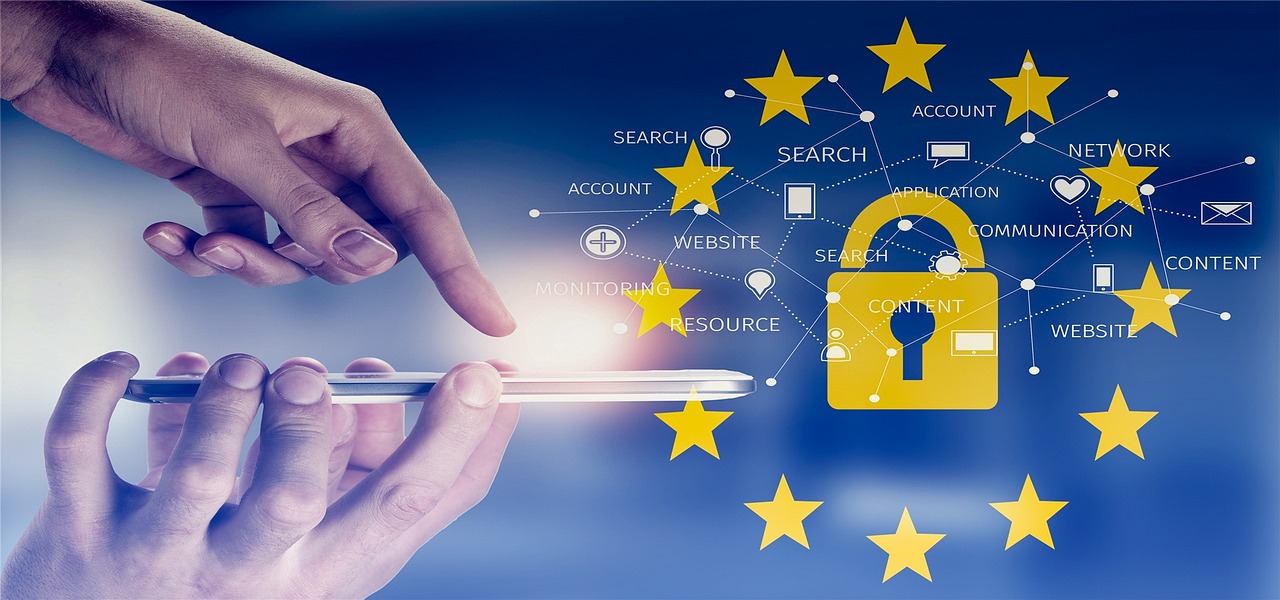
Staying Informed on Security Trends
In the fast-paced world of cryptocurrency, staying informed about security trends is not just a good practice; it's a necessity. The digital landscape is constantly evolving, with new threats emerging almost daily. Just as a sailor must keep an eye on the weather to navigate safely, wallet users must remain vigilant about the latest security developments to protect their assets. Ignoring these trends can lead to devastating losses, so let's dive into why this awareness is crucial.
One of the best ways to stay updated is by following reputable sources of information. Websites, blogs, and forums dedicated to cryptocurrency often provide valuable insights into recent security breaches, phishing scams, and other vulnerabilities. Additionally, subscribing to newsletters from trusted security firms can keep you informed about the latest threats and how to mitigate them. Knowledge is power, and in the world of digital wallets, it can be the difference between keeping your assets safe or losing them to a cyberattack.
Moreover, participating in online communities can be incredibly beneficial. Platforms like Reddit and specialized Discord servers allow users to share their experiences, tips, and warnings about potential threats. This kind of peer-to-peer information exchange can be invaluable, as it often provides real-time updates that official channels might miss. When you hear about a new phishing scam or a vulnerability in a popular wallet, you'll be better equipped to protect yourself.
Another effective strategy is to attend webinars and workshops focused on cryptocurrency security. These events often feature experts who discuss the latest trends and provide actionable advice. Engaging with professionals in the field not only enhances your understanding but also allows you to ask questions and clarify doubts. Think of it as going to a masterclass where you learn directly from the best in the business.
To give you a clearer picture, here’s a quick overview of some recent trends in digital wallet security:
| Trend | Description |
|---|---|
| Increased Phishing Attacks | Phishing scams are becoming more sophisticated, often mimicking official communications from wallet providers. |
| Rise of Hardware Wallets | More users are opting for hardware wallets due to their enhanced security features compared to software wallets. |
| AI and Machine Learning | These technologies are being used to detect unusual patterns in transactions, helping to prevent fraud. |
In conclusion, staying informed about security trends is essential for anyone using digital wallets. By leveraging various resources—whether through online communities, expert webinars, or reputable news sources—you can arm yourself with the knowledge needed to navigate this ever-changing landscape. Remember, the more informed you are, the better you can protect your digital assets from potential threats.
- What is the best way to stay updated on security trends? Following reputable news sources, joining online communities, and attending webinars are excellent ways to stay informed.
- How often should I check for updates on security trends? Regularly checking—at least weekly—can help you stay ahead of potential threats.
- Are hardware wallets safer than software wallets? Generally, yes. Hardware wallets store your private keys offline, making them less vulnerable to online attacks.
Frequently Asked Questions
- What is a digital wallet?
A digital wallet is a software application that allows users to store, send, and receive cryptocurrencies. It acts as a virtual wallet for managing digital assets, enabling seamless transactions and secure storage.
- How do I ensure my digital wallet is secure?
To secure your digital wallet, follow best practices such as enabling two-factor authentication (2FA), using strong and unique passwords, and regularly updating your wallet software. Additionally, be cautious of phishing attempts and avoid sharing sensitive information.
- What is two-factor authentication (2FA) and why is it important?
Two-factor authentication (2FA) is an extra layer of security that requires not only a password but also another form of verification, such as a code sent to your phone. This helps protect your wallet from unauthorized access, making it harder for hackers to compromise your account.
- What are common pitfalls with 2FA?
Some common pitfalls with 2FA include using SMS verification, which can be intercepted, or neglecting to back up authentication methods. Always choose a more secure option like authentication apps and ensure you have recovery options in place.
- How can I recognize phishing attempts?
Phishing attempts often come in the form of emails or messages that look legitimate but contain malicious links. Always check the sender's address, look for spelling errors, and never click on links from unknown sources. When in doubt, visit the official website directly.
- Why is it important to keep my wallet software updated?
Keeping your wallet software updated is crucial because updates often include security patches that protect against new threats. Regular updates help ensure that you are using the most secure version of the software, which can prevent potential breaches.
- How do I update my wallet software?
To update your wallet software, check for updates within the application settings or visit the official website for the latest version. Follow the provided instructions to download and install the update, ensuring your wallet remains secure and functional.
- How can I stay informed about security trends in the cryptocurrency space?
Staying informed about security trends involves following reputable news sources, joining online communities, and subscribing to newsletters related to cryptocurrency. Engaging with other users can also provide valuable insights into emerging threats and best practices.

